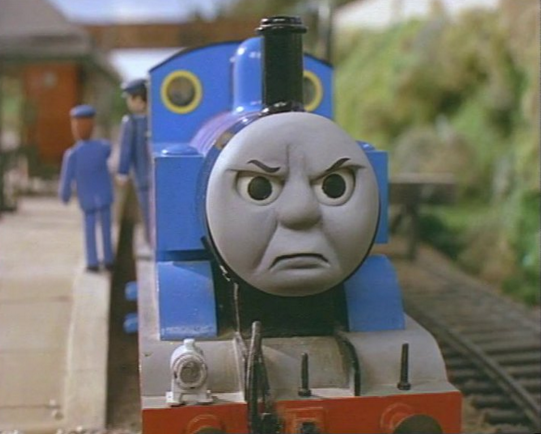The Northeast Megalopolis a.k.a. Acela Corridor is the wealthiest metropolitan region in the history of the world. It contains over 50 million people and accounts for ~20% of U.S. GDP, or almost $5 trillion USD annually. For comparison, the region's gross domestic product is larger than all other countries in the world except for China.
Amtrak’s flagship Acela line traverses 457 miles across the region, from Boston to Washington D.C., and is a major artery for business travelers. However, this pivotal transport link grapples with a persistent and well-documented issue: unreliable Wi-Fi connectivity. This problem has considerable economic implications but does not appear to have been quantified.
As a frequent passenger, I am honestly embarrassed not only at the current state of internet infrastructure but also that we’ve habituated ourselves to accepting this poor state of affairs. This analysis attempts to estimate the economic costs of lost productivity due to unreliable Amtrak Acela Wi-Fi .
Data Collection
The Acela service transports approximately 3.5 million passengers per year.
The average trip length is approximately 198 miles and the average speed varies from ~82 mph (DC<>NYC) to ~66 mph (NYC<>BOS). A reasonable estimation for the weighted average is 75 mph, for an average trip duration of 2 hours and 39 minutes.
- Note: This does not include delays, which are regrettably frequent at ~15-25% of all rides in the NE Corridor depending on year. Approximately 50% of delays are caused by freight and slower regional traffic using the same tracks.
Approximately 61% of Acela passengers are business travelers. The average income of an Acela rider is $170,000/year. Using the standard 2080 working hours per year, this equates to an hourly rate of $81.70.
Estimating Productivity Loss
Several factors impact the cost function:
- Internet Dependency: What percentage of passenger productivity is dependent on Internet access?
- Connectivity Gap: What percentage of connectivity needs are not met? Amtrak routinely caps connections at 3 Mbps but frequently has hardware issues preventing any connections. Many passengers depend on mobile hotspots on personal devices, but service can disappear along remote stretches of the route.
- Value of Leisure Time: How should we value the time of leisure travelers?
A formal estimate for each of these would require surveys or observational studies, but from own experience I suggest the following starting points:
- Internet Dependency Factor: 0.3 - Passengers without adequate internet access are only 30% as productive as those with consistent access. They may be able to complete offline document editing and asynchronous emails, but a majority of tasks in mainstream sectors such as finance, IT, legal, and sales require connectivity.
- Connectivity Gap: 0.6 - Approximately 60% of passenger internet needs are not met, or conversely 40% of needs are achieved by mobile hotspots or via successful connection to Amtrak Wi-Fi.
- Value of Leisure Time: Again, this is subjective, but I would propose 25% of the hourly working rate as a suitable value.
Evaluation
Cost of Unreliable Wi-Fi = Costs Incurred by Business Travelers + Costs Incurred by Leisure Travelers
Cost of Unreliable Wi-Fi =
(Total Passengers × Percentage Business Travelers × Average Income per Hour × Average Trip Duration × (1 - Internet Dependency Factor) × Connectivity Gap) +
(Total Passengers × Percentage Leisure Travelers × Average Leisure Value per Hour × Average Trip Duration × (1 - Internet Dependency Factor) × Connectivity Gap)
Using this formula, we arrive at a cost of
$263 million per year
due to unreliable Wi-Fi on the Acela line.
Limitations and Sensitivity Analysis
Subjective Factors: The total economic cost is highly sensitive to the underlying assumptions for Internet Dependency Factor, Connectivity Gap, and the Value of Leisure Time. I have been unable to find suitable studies on these subjects, and welcome any feedback that would help answer questions such as:
- How much more productive is the typical worker with a 50 Mbps versus 3 Mbps connection?
- How much disruption is caused by a dropped connection for 2 out of every 20 minutes of a trip, compared to consistent connectivity?
- Should the value of business activity be accounted differently due to the setting, lower than normal (e.g. lack of privacy) or perhaps higher (e.g. uninterrupted focus time outside of the office)?
Low Disruption Scenario
If we consider the connectivity situation to be better than described above, for example a higher penetration of mobile hotspots and a lower reliance on connectivity to complete tasks, we could use the values of Internet Dependency Factor: 0.6 and Connectivity Gap: 0.5. We can conceptualize this as “travelers without internet access are 60% as productive as those with consistent access” and “approximately 40% of internet needs are not met”.
This scenario equates to an economic cost of $107 million per year, while holding other factors constant.
High Disruption Scenario
If we take a pessimistic view and believe business productivity is highly impacted, we could use the values of Internet Dependency Factor: 0.2 and Connectivity Gap: 0.8. We can conceptualize this as “travelers without internet access are 20% as productive as those with consistent access” and “approximately 80% of internet needs are not met”.
This scenario equates to a net cost of $343 million per year, while holding other factors constant.
Deferred or Avoided Travel: I believe that many valuable short-duration business trips are avoided. For example, a same-day round trip from DC to NYC for a long lunch meeting is not particularly disruptive if the 5.5 hours of train time are productive. This opportunity cost is not accounted for in the analysis.
Alternate Transportation Modes: The Acela is relatively expensive compared to air and ground travel, so travelers often switch to these alternatives. However, air travel is substantially more inefficient per passenger-mile (fuel cost) and motor vehicle travel is substantially more unsafe. The IIHS calculates traffic fatalities as 1.37 per 100 million vehicle miles traveled , so if Acela ridership increased by 25% at the expense of vehicle travel, we could expect 2.4 lives saved per year, or $29.7 million dollars using USDOT value of statistical life guidance.
Unaccounted Variables: Factors like stress caused by unreliable connectivity and the effect on Amtrak's reputation are not quantified. These factors could have economic implications.
Technical Commentary & Conclusion
In past years, Amtrak trains used cellular modems which aggregated signals from major carriers. Starting in 2016, Amtrak began to install a “trackside network” along the Northeast Corridor (first available to the Acela service, then NE corridor trains). The work appears to have been completed in late 2017, with Amtrak documentation listing annual budgets around $30 million and a separate news release publicizing a contract value of $200 million for the Northeast Corridor. I am unsure of the actual total cost.
One underlying challenge is well-known by anyone familiar with Amtrak’s operations: the lack of dedicated, Amtrak-owned tracks. Passenger traffic suffers because freight trains can take priority on private railways, and in this scenario the legal and financial incentives for installing networking infrastructure on private railways are misaligned.
Yet many questions remain. Even in areas without trackage rights conflicts, connection rates are capped at exceedingly low rates (~3 Mbps), routers frequently malfunction, and latency is high enough to interfere with many activities (e.g. Zoom calls, editing shared documents).
Alright, we've covered a lot of ground! Please let me know of any errors or omissions in my analysis. I hope this discussion contributes to a brighter and better future for rail travel in the United States, let's keep building!
Addendum
The Northeast Regional operates across a similar territory and is Amtrak’s most popular passenger route. It is more economical, but slower than the Acela. Amtrak provides a variety of figures that allow us to execute the same calculations described above:
- 12 million passengers per year
- ~165 mile average trip length
- Average speed of ~60 mph , average trip duration of 2 hours 45 minutes
- 32% of passengers are business travelers
- $124,000 average income
Using the Low, Medium, and High Estimates above results in figures of $56 million, $118 million, and $179 million respectively. However, this analysis is much more dependent on the valuation of leisure time, given that many more passengers are leisure travelers.

